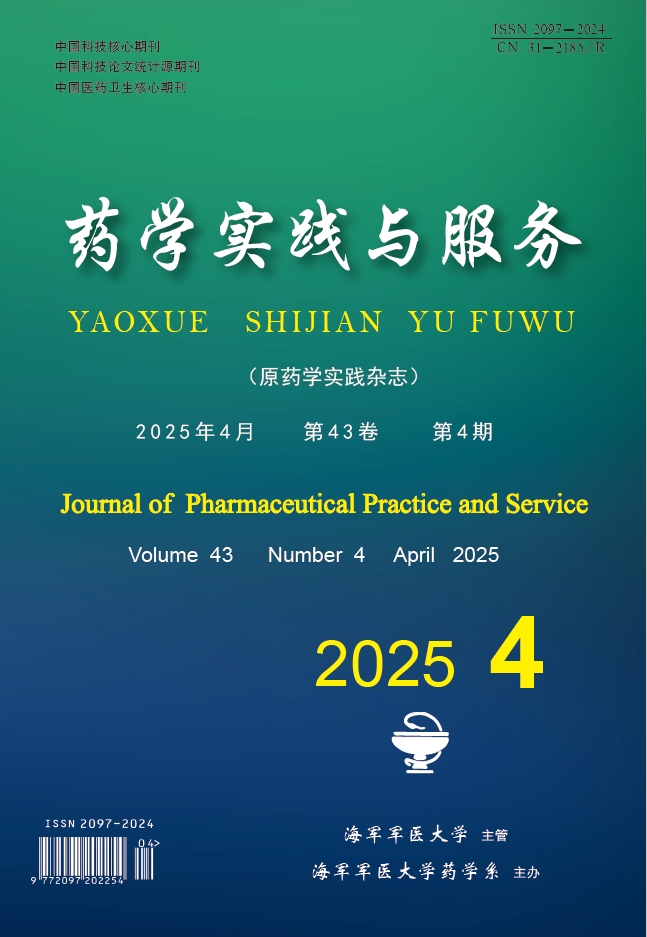2007 Vol. 25, No. 4
Display Method:
2007, (4): 210-214,234.
Abstract:
Using comparative molecular field analysis(CoMFA)and comparative molecular similarity indices analysis(CoM- SIA),three dimensional structure-activity relationship(3D-QSAR)has been studied on a series of novel tetralin antifungal com- pounds.Variation...
Using comparative molecular field analysis(CoMFA)and comparative molecular similarity indices analysis(CoM- SIA),three dimensional structure-activity relationship(3D-QSAR)has been studied on a series of novel tetralin antifungal com- pounds.Variation...
2007, (4): 215-218.
Abstract:
Objective: To study the technological parameters of separating total flavornoid and saponin of Tongqiao Biyan tablet with macroporous resin 1300. Methods: With the elution quantity as index,the absorption characteristics and elution parameters were s...
Objective: To study the technological parameters of separating total flavornoid and saponin of Tongqiao Biyan tablet with macroporous resin 1300. Methods: With the elution quantity as index,the absorption characteristics and elution parameters were s...
2007, (4): 219-221,237.
Abstract:
Objective: To establish a method for quality control of Kangshen pills. Methods: The qualitative analysis of Radix As- tragali,mycelium powder of Cordyceps Sinrnsis,Radix Saposhnikoviae in Kangshen pills were identified by TLC.The content of astra- g...
Objective: To establish a method for quality control of Kangshen pills. Methods: The qualitative analysis of Radix As- tragali,mycelium powder of Cordyceps Sinrnsis,Radix Saposhnikoviae in Kangshen pills were identified by TLC.The content of astra- g...
2007, (4): 222-223,260.
Abstract:
Objective: To prepare flurbiprofen liposomal gel and to establish its quality control method. Methods: The liposome was prepared by ethanol injection method and the liposomal gel was prepared using mixing method.The content of flurbiprofen was de ter...
Objective: To prepare flurbiprofen liposomal gel and to establish its quality control method. Methods: The liposome was prepared by ethanol injection method and the liposomal gel was prepared using mixing method.The content of flurbiprofen was de ter...
2007, (4): 224-226.
Abstract:
Objective: To establish a quality control method for Changtai capsules. Methods: Qualitative analysis of Hedyotis difusa Willd and Herba Sarcandrae were carried out by TLC,Radix Pulsatillae was tested by UV.Ethanol-soluble extractive of Changtai cap-...
Objective: To establish a quality control method for Changtai capsules. Methods: Qualitative analysis of Hedyotis difusa Willd and Herba Sarcandrae were carried out by TLC,Radix Pulsatillae was tested by UV.Ethanol-soluble extractive of Changtai cap-...
2007, (4): 227-228.
Abstract:
Objective: To observe curative effect of small dose of ferrous sulfate on pregnant woman with iron deficiency.Method: 106 pregnant women were divided into treatment group and control group randomly.53 patients were in each group.Ferrous sulfate 5 mg/...
Objective: To observe curative effect of small dose of ferrous sulfate on pregnant woman with iron deficiency.Method: 106 pregnant women were divided into treatment group and control group randomly.53 patients were in each group.Ferrous sulfate 5 mg/...
2007, (4): 229-231.
Abstract:
Objective: To investigate the actualities of the distribution and resistance of pathogen isolated from clinical specimens, to provide the basis for clinical rational use drug. Methods: The pathogenes isolated from clinical specimens in 2005 were anal...
Objective: To investigate the actualities of the distribution and resistance of pathogen isolated from clinical specimens, to provide the basis for clinical rational use drug. Methods: The pathogenes isolated from clinical specimens in 2005 were anal...
2007, (4): 232-234.
Abstract:
Objective: To establishe a HPLC method for determination of tolperisone hydrochloride tablets. Methods: A Phenome- nex Luna C~(18) column(250 mm×4.6 mm,5μm)was used,the mobile phases was consisted of acetonitrile-0.1 mol/L sodium acetate (25:75)(adju...
Objective: To establishe a HPLC method for determination of tolperisone hydrochloride tablets. Methods: A Phenome- nex Luna C~(18) column(250 mm×4.6 mm,5μm)was used,the mobile phases was consisted of acetonitrile-0.1 mol/L sodium acetate (25:75)(adju...
2007, (4): 235-237.
Abstract:
Objective: To determine residual di-paraxylylene in parylene film coated rubber closure by HPLC. Methods: Parylene film coated rubber closures were extracted with acetone,which then evaporated and transferred with ethanol to volumetric flask,the val-...
Objective: To determine residual di-paraxylylene in parylene film coated rubber closure by HPLC. Methods: Parylene film coated rubber closures were extracted with acetone,which then evaporated and transferred with ethanol to volumetric flask,the val-...
2007, (4): 238-240.
Abstract:
Objective: To establish an accurate and rapid method for determination of ropivacaine by RP-HPLC. Methods: The sample was treated by the addition of bupivacaine as an internal standard,extraction with aether and n-hexane,and dryed by N2.The residue d...
Objective: To establish an accurate and rapid method for determination of ropivacaine by RP-HPLC. Methods: The sample was treated by the addition of bupivacaine as an internal standard,extraction with aether and n-hexane,and dryed by N2.The residue d...
Analyses of 4491 valid cases report about monitoring system of the adverse drug reaction in Shanghai
2007, (4): 247-260.
Abstract:
Objective: To analyse of Shanghai adverse drug reaction(ADR)reports,in recent years. Methods: 4491 valid cases reported by the ADR monitoring center network reporting system in Shanghai were analysed. Results: The occurrence of the ADR showed no diff...
Objective: To analyse of Shanghai adverse drug reaction(ADR)reports,in recent years. Methods: 4491 valid cases reported by the ADR monitoring center network reporting system in Shanghai were analysed. Results: The occurrence of the ADR showed no diff...
2007, (4): 261-262.
Abstract:
Objective: To investigate 323 reports of adverse drug reactions(ADRs)in our hospital in 2005,and to analyze the re- lationship between ADRs and age,the used drugs. Methods: The cases of ADR were analyzed by descriptive study. Results: 194 kinds of dr...
Objective: To investigate 323 reports of adverse drug reactions(ADRs)in our hospital in 2005,and to analyze the re- lationship between ADRs and age,the used drugs. Methods: The cases of ADR were analyzed by descriptive study. Results: 194 kinds of dr...




 Contribution System
Contribution System Author Login
Author Login Review Login
Review Login Editor Login
Editor Login Reader Login
Reader Login



 News
News